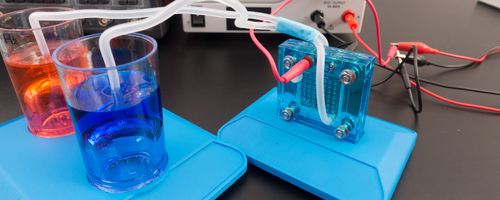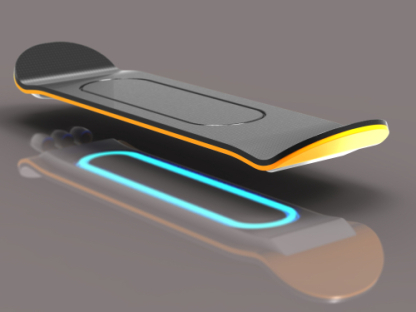R.E. Kearney's Blog, page 14
April 15, 2021
Smart Fabrics Turning Your Clothes into a Walking Digital Display
Imagine walking around with your clothes lighting up like a digital display, allowing you to send messages and emails and turning into a keyboard. Even more shocking, imagine a direct communication with your clothes allowing them to adapt to varying temperatures or share crucial fitness information with your instructor while you are in the middle of a marathon run.
While it sounds like an ironman suit straight out of science fiction, smart fabric is quite real and scientists from the Fudan University in China have been able to create a fabric with embedded digital components that can conveniently be used as a digital display and communication tool while being folded, washed, and worn like your regular clothes.
The introduction of durable smart fabrics are set to revolutionize the world of wearable gadgets. According to experts the market size is expected to exponentially increase by 30.4% from 2019 to 2025.

The attempts at building conductive yarns that could be woven into fabrics had been going on for decades, but most attempts barely made it out of the research labs and onto people’s bodies since the resulting fabrics were extremely fragile and couldn’t withstand the abuse our clothes are usually put through.
Other smart fabrics which have been able to make it to market operate in predetermined ways such as the high-end beachwear manufactured by a French startup Spinali Design, with ultraviolet sensors which notify users when to apply sunscreen.
However, this new fabric developed by the researchers in China has been able to withstand over 100 washing and drying cycles and its display continues to work just fine, becoming a revolutionary leap forward in the field of electronic textiles that will have an insurmountable impact on industries worldwide, according to research published in the journal “Nature.”
The authors of the research journal suggest that the practical use for smart fabrics will not just be limited to fashion designer being able to integrate adaptive electronic displays into their outfits, but will have far more serious and life changing applications.
People with physical or cognitive impairments will be able to conveniently communicate with the smart fabrics. In addition, the speech-to-text display will allow communicating in foreign languages. The use of smart fabrics for the advertising industry will also evolve the concepts of marketing & advertising allowing people to turn into walking billboards.
Many tech giants around the world have been actively working on integrating the smart fabric technology to new applications. For instance, Google has been working with Levis for quite a few years to develop a smart denim jacket using Google’s Project Jacquard Smart Tech giving built in touch controls to the sleeves of the jacket. Similarly, Apple filed a patent to integrate health monitoring technology into clothing.
There’s still some time until we see our local clothing outlets displaying digital clothing on their mannequins, but it may just happen in the very near future.
April 8, 2021
Cloud Seeding
As concerns of water scarcity in the wild west of the United States grow, scientists continue to resort to modern weather modification techniques to create rain in areas of the West Coast facing the worst drought in centuries. With limited rainfall and continuing droughts, the Colorado River and its water-banks are running dry, risking the water supply to over 30 million Americans.
To overcome the drought, in the snowcapped mountains of the West Coast, crushed particles of a chemical compound are being launched from the ground up into the sky or being directly injected into the clouds through airplane flares. The purpose of injecting these particles in the clouds is simple: encourage precipitation, in common terms, provoke rainfall.

While the idea of a cloud making machine may sound as if it’s out of a comic, this process is called cloud seeding, and it is very real. The technique uses particles of silver iodide injected in the clouds. The structure of silver iodide is very similar to ice and thus attracts droplets causing them to cluster and freeze eventually resulting in rainfall/snow. The snow melts during the warmer months and the water is added to the running streams increasing the supply to the population.
The concept of cloud seeding has been around for over 5 decades. It has been used not only to encourage rainfall, but to also reduce hailstone size and to cause clouds to precipitate earlier than when they are expected to.
The effectiveness of the process is still a point of huge discussion as most of the experiments done in the second half of the 20th century didn’t yield satisfactory results and no significant increase in precipitation was ever recorded. However, scientists working on the cloud seeding project believe that right now is the best time to address the issue as global temperatures continue to rise, posing an even greater risk of drought that could last for decades.
Scientists believe that in order to better manage the water supply across America, authorities have only two choices. The first is to reduce the demand by introducing conservation and recycling methods and the second is to somehow increase the water supply. “Cloud seeding is a relatively inexpensive proposition,” remarked Jeff French, an atmospheric scientist at the University of Wyoming.
While Jeff French himself is doubtful about cloud seeding being a viable option to increase rain/snow in the regions, it is a technique worth trying to help regions prone to drought.

The states of Utah, Colorado, and Wyoming, among others are not holding back in their attempts to modify the weather of the region and induce rainfalls and have all introduced cloud seeding projects.
Research recently suggested a 5 – 15% increase in rain/snow fell in regions where the technique was implemented, but unfortunately, scientists haven’t been able to draw a concrete link between increased rain and cloud seeding.
March 25, 2021
World’s First Home Hydrogen Battery
While most of Texas drowned in darkness and cold with the biggest power outage of recent times hitting the region, an Australian energy company might have found the perfect solution in the form of a renewable hydrogen-powered battery, which can store 3 times more power than Tesla’s famed Powerwall.
Lavo’s hydrogen battery can store enough energy to run an entire home for about 3 days becoming the world’s first home hydrogen battery.
Lavo’s Green Energy Vs Tesla’s Powerwall: The Tesla Powerwall typically works on Lithium Battery Systems and until now served as the perfect alternative to generating and storing energy for when the sun went out.
The Tesla Powerwall typically works on Lithium Battery Systems and until now served as the perfect alternative to generating and storing energy for when the sun went out.
The Lavo Green Energy Storage System weighing over 320 KGs offers a rather improved solution with a storing capacity of over 40Kilowatt-hours, roughly 3 times greater than Tesla’s Powerwall. The battery also has Wi-Fi Connectivity and a phone application allowing home owners to monitor and control the power storage capacity. You can even connect several Energy Storage Systems and create a mini power supply plant at your home.
How Does the Lavo Battery Function?The Lavo Green Energy Storage System can be connected to a hybrid solar inverter and a water outlet through a purification unit. The battery uses excess energy to electrolyze the water running through it and releases oxygen  simultaneously storing hydrogen in a metal hybrid sponge. When the energy is needed, the battery uses a fuel cell to deliver this energy directly to your home and power your appliances.
simultaneously storing hydrogen in a metal hybrid sponge. When the energy is needed, the battery uses a fuel cell to deliver this energy directly to your home and power your appliances.
The hydrogen battery doesn’t use Earth’s rare metals and poses a lower risk for accidents. While the claims made by LAVO may seem too good to be true, there’s a price to pay, and trust us, that price is quite high. The battery costs approximately 3 times higher than the Tesla Powerwall and is currently available for $26,900. However, the manufacturers of the hydrogen battery believe that the price will go down making it the most viable energy solution for modern homes.
The unit also has a limited efficiency of 50 percent which is far below the average efficiency of Lithium-Ion battery systems. However, there’s a lot of margin for improvement in the product and if the Australian company continues to implement the latest tech advancements to the hydrogen-powered battery systems, it might give Tesla a run for their money.
March 18, 2021
Russia’s Next-Gen Military Armor
For decades, the US and Russian military have competed excessively in body armor technology, to give their soldier superhuman capabilities. For over a decade now, the Russian Sotnik or Centurion is leading the race by multiple paces. The third generation body armor can survive 7.62 mm rounds and is equipped with other high-end gear include night vision goggles and internal communication systems.
In a recent announcement that has met mixed reactions from warfare analysts, the Russian state-owned military manufacturer Rostec claimed that they have begun working on the 4th generation Sotnik which will be strong enough to withstand a direct shot of .50 caliber bullet, making it even more powerful than bulletproof vehicles.
A .50 caliber bullet is larger than your fist and approximately 3 times larger than the 7.62mm bullets, and anyone who is hit directly by the .50 caliber almost immediately dies. If in an extremely fortunate case the person survives, they are most likely to end up with irreparable physical damage.
However, whether the armor would allow soldiers to move along the front lines during battles is another story altogether.
How Real is the Claim?Russian military warfare development experts believe that the 4th generation Sotnik made of lightweight polyethylene fiber and armor will be able to withstand the brunt of .50 caliber bullets with ease and will also be lighter in weight and easier for the soldier to wear and move around thus literally giving Russian soldiers superhuman capabilities during combat.
The armor is also said to be equipped with other robotic equipment and communication exchange systems integrated within making it a literal embodiment of the ironman. In a press release issued by Rostec, it was claimed that this new armor will surpass the outgoing Ratnik Suit that includes features of thermal vision, internal heaters, gas kit, med kit, and integrated communications. In the last 8 years, over 300,000 units of the Ratnik have been delivered to the Russian Ministry of Defense.
The Arms Race Between Russia & USA:Even though the US army has excessively worked for decades to developed armors that will enhance the capabilities of the soldiers on the front line, they haven’t been able to achieve even half of what the Russian manufacturers have built.
Russian military experts and analysts have said Rostec is very serious about keeping up its bold promises and believes they will be able to further lead the high-tech battle armored race for centuries to come.
Looking Back in History: In the 1990s, US Helicopter crews were issued with the SARVIP (Survival Armor Recovery Vest Inserts and Packets) including huge pockets for ceramic plates to withstand the 0.50 caliber bullets. However, the weight of the armor was so much that they were hardly ever worn by the crew.
In the 1990s, US Helicopter crews were issued with the SARVIP (Survival Armor Recovery Vest Inserts and Packets) including huge pockets for ceramic plates to withstand the 0.50 caliber bullets. However, the weight of the armor was so much that they were hardly ever worn by the crew.
Earlier in WW1, the Germans also introduced Sappenpanzer, a heavy body armor made of segmented steel plates. Even though the armor was successful in terms of protecting the soldiers but it was so heavy that it could only be worn by machine gunners or sentries.
Whether the new Russian Sotnik will be able to break the barriers of the past and provide superhuman capabilities without restricting movement is yet to be seen.
March 11, 2021
Integrating Human Brain Cells into Microchips
For a long time, science has attempted to imitate the human brain’s intellectual and adaptive capabilities to create artificial solutions. Artificial Intelligence was the first big step towards imitating the functions of the brain. However, today AI has developed far beyond a simple problem-solving data model and machine learning system, to artificial neural networks, a more complex imitation of the human nervous system.
While machine learning systems chiefly operated according to programmed algorithm and data, like the Facebook Facial Recognition feature that scanned through millions of uploaded photographs, scientists are now taking AI a step further by making the machines think, really think.
 Project Neu-Chip
Project Neu-Chip In an effort to harness the intelligent processing capabilities of the human brain, a team of international scientists from Aston University, England have embarked on project Neu-Chip, a detailed study and experiment to try to physically integrate human brain cells into Artificial Intelligence Microchips.
The research has received a grant of €3.5 Million from the European Commission. Scientists will try and layer complex networks of brain cells onto microchips in order to enable the chips to dynamically solve problems from the data. The brain cells integrated on the chips will be stimulated by firing varying patterns of light beams. Scientists will then use 3D computer modeling to study any changes to track the adaptability of the cells.
The project includes research associates, professors and scientists from institutions throughout Europe and beyond.
The Endless PossibilitiesAccording to a press release issued by Aston University, mathematician David Saad, one of the scientists participating in the research program said that the aim of the study is to harness the unrivaled computing power of the human brain in order to dramatically increase the ability of computers to solve problems.
The scientists on the research team collectively believe that this integration of human brain cells into a microchip has all the potential to surpass the limitation in machine learning technology. It’s believed to have the potential to bring about a dramatic shift in AI technology by improving the processing power as well as the energy consumption of AI machines for solving complex problems.
 Dr. Jordi Soriano, an associate professor of Physics at the University of Barcelona said that the ability to engineer neuronal circuits in a dish and train them to conduct data analysis will provide new insights into how the brain computes information and finds solutions. The developed technology may even help to design unique and exciting human-machine interfaces.
Dr. Jordi Soriano, an associate professor of Physics at the University of Barcelona said that the ability to engineer neuronal circuits in a dish and train them to conduct data analysis will provide new insights into how the brain computes information and finds solutions. The developed technology may even help to design unique and exciting human-machine interfaces.
Project Neu-Chip is not just focused on making AI algorithms more efficient and faster, but also more powerful and independent. Until now, all AI powered programs and machines typically relied on artificial circuitry inspired by the human brain. However, with Project Neu-Chip, scientists are actually experimenting on implementing the biological cell itself for the very first time.
March 4, 2021
Rising Sea Levels Putting 40% of World Population at Risk
When you consider global warming – melting glaciers, rising temperatures, forest fires, and increasing sea levels – are some of the major impacts that pop to mind almost immediately. Thanks to the massive campaigns for restoring the ecosystem worldwide, everyone is aware of the potential dangers of global warming. However, it will not be an overstatement to say that very little is being done on the grass-root level to avoid the inevitable.
 With more and more cars running on the roads emitting toxic fumes, more CFC emitting devices, and increased industrialization leading to the cutting down of forests, the global temperature is rising and causing a major climatic change despite the efforts environmental agencies are putting in to save the environment. Studies suggest that the 100-year projections are still very bleak.
With more and more cars running on the roads emitting toxic fumes, more CFC emitting devices, and increased industrialization leading to the cutting down of forests, the global temperature is rising and causing a major climatic change despite the efforts environmental agencies are putting in to save the environment. Studies suggest that the 100-year projections are still very bleak.
According to projections made in 2019 by the Intergovernmental Panel on Climate Change (IPCC), a UN body that reports on climatic changes, the sea levels would rise roughly by a maximum of 1.10 meters (3.61 feet) by the end of this century. A more conservative approach suggested that if the environmental protection agencies continued to actively engage in reinforcement of climate protection measurements, the sea level rise may be limited to 0.61 meters (2 feet).
The projections were made taking into account current climatic changes, greenhouse gas emissions, ocean warming, and the behavioral changes adopted by humans to reduce their carbon footprints.
Sea Levels Rising Much Faster than IPCC Projections:However, many scientists believe that the IPCC’s model to calculate the rising sea levels is failing to take into account historical patterns and the sea levels might be rising at a rate faster than projected.
 Environmental scientists from the University of Copenhagen and the Bjerknes Center for Climate Research in Norway joined hands and derived a new way to measure the direct impact of rising global temperatures on the sea levels. Their findings were published in February 2021, in the Ocean Science Journal and have raised serious concerns.
Environmental scientists from the University of Copenhagen and the Bjerknes Center for Climate Research in Norway joined hands and derived a new way to measure the direct impact of rising global temperatures on the sea levels. Their findings were published in February 2021, in the Ocean Science Journal and have raised serious concerns.
According to the study, looking through the lens of historical data, the sea levels are actually projected to rise by half a meter if the temperature rises only half a degree Celsius. However, given the current rate, the global temperature might go up to 2 Celsius causing a correspondingly higher rise in sea levels by the end of 2100
Nearly 40% of the global population is at risk given that they live near the coastlines and projections of the recent study suggest that the rise in the sea levels might go beyond 1 meter if the temperatures continue to rise.
Depleting the Carbon Budgets:The study further suggests that to prevent the risks associated with such an alarming rise in sea levels, the global economy must reduce carbon emissions by 200 billion metric tons in addition to the actual carbon emission reduction required to meet the climate goals for the century.
The co-author of the study and geophysicist from the University of Copenhagen, Aslak Grinsted said that the global carbon budget has depleted even more and the current projections are too conservative to call for drastic measures.
Drawing a comparison between the IPCC projections and the research paper findings, the scientists have proposed that the upper levels of rising sea levels in the IPCC reports are too low and the IPCC hasn’t taken historical data into account thus calling for more urgent and active measures to stop the global temperatures from rising.
February 25, 2021
Popcorn Powered Robots
Robots have always been a futuristic phenomenon, and their production is conventionally viewed as technological and scientific advancements. There are many popular applications where Robots have proven their efficiency and productivity, like in healthcare, manufacturing, military and more. However, traditionally the importance has been placed on what tasks robots can do for us; like drive our cars, clean our floors or even give us extra limbs. But what can power their abilities.
Remember when we were engrossed in devouring popcorns while enjoying the theatrical experience at the movies? Steve Ceron came up with a genius idea of using the same popcorns we eat for a much bigger purpose at Cornell’s Collective Embodied Intelligence Lab.
 With his team of researchers, Ceron drafted a paper explaining how simple robots can be powered by Popcorn without electricity or hydraulics, at the IEEE International Conference on Robotics and Automation. Yes, it’s true! In this ultra-modern era, it has become commonplace that we come across strange yet astounding developments in the sci-fi field and a popcorn robot is exactly that. The engineers from Cornell University demonstrated their hypothesis. Inside a silicon beam that was fastened with toasted wire, they put 36 kernels. An electrical current was dispersed through the metal chord, warming up the kernels which eventually started popping due to the heat, moving the silicon.
With his team of researchers, Ceron drafted a paper explaining how simple robots can be powered by Popcorn without electricity or hydraulics, at the IEEE International Conference on Robotics and Automation. Yes, it’s true! In this ultra-modern era, it has become commonplace that we come across strange yet astounding developments in the sci-fi field and a popcorn robot is exactly that. The engineers from Cornell University demonstrated their hypothesis. Inside a silicon beam that was fastened with toasted wire, they put 36 kernels. An electrical current was dispersed through the metal chord, warming up the kernels which eventually started popping due to the heat, moving the silicon.
Popcorn has distinct features that include being readily available, cheap, and having the ability to expand in terms of the shape and size when heated. This invention could potentially be a stepping stone towards overall soft robots, but could also be utilized for a wider use. Ceron suggests that this invention’s long-term benefits are manifold; ranging from its ability to complete basic transportation, to serving as an inexpensive building block through which biodegradable structures can be made. He asserts that it can even function as a viable alternative to spray foam.
To claim popcorn robots will take over the world is not a coherent argument to make at this point. While they can hold objects and lift relatively lighter weights by expanding, there are certain limitations to achieving tasks beyond their ability. The engineers accomplished this by creating a claw where its “fingers” or insides were lined with raw kernels and a heating wire. As soon as the kernels burst open, they wield tension on the sleeve, holding them in a process that is similar to tense muscles. Given that the production is exceptionally cheap, deploying many of these robots will pave the way for a wide range of applications across various fields.
One can claim that the future looks bright, fluffy and delightful as researchers are now integrating food into Science and increasing the scope for similar innovations.
February 18, 2021
Energy from Black Holes
Commonly known as a space phenomenon that sucks everything into a central singularity, black holes can emit radiation. Even though a typical perception paints an uncongenial representation of black holes, relativity’s general theory gives an extraordinary prediction. The theory of Einstein envisages black holes as an efficient and enormous source of untapped energy.
 Unarguably, the most enigmatic celestial object, black holes, are now believed to be energy powerhouses. For several decades, astrologists and scientists have contributed to decrypting the mystery of black holes. Roger Penrose discovered that the development of black holes is a prediction of the theory of relativity. Stephen Hawking theorized the entire phenomenon “Hawking Radiation.”
Unarguably, the most enigmatic celestial object, black holes, are now believed to be energy powerhouses. For several decades, astrologists and scientists have contributed to decrypting the mystery of black holes. Roger Penrose discovered that the development of black holes is a prediction of the theory of relativity. Stephen Hawking theorized the entire phenomenon “Hawking Radiation.”
Populating space might be the highest frontier that humans have ventured on. The vision of large, manned habitats on the moon and or elsewhere in the solar system has so far been science fiction. However, new research hints towards the realization of the ultimate fantasy of every astrophysicist. According to a study at Colombia University and Universidad Adolfo Ibanez in Chile, the energy from black holes could be extracted through the charged plasma particles. These particles could be harvested right before the event horizon to extract that energy.
Luca Comisso, the research scientist at Colombia University, proposed the acceleration of plasma particles to negative energy, resulting in the possible extraction of black hole energy. The theory makes black holes the endless source of energy for possible colonization in deep space. The discovery makes it easier for astronomers to formulate accurate estimations and theories regarding the spin and emissions of black holes.
 As far as the theory goes, human habitats in space seem like a reality. Asenjo, the coauthor of the study, postulated that energy extraction is possible because of the high relative velocity between captured and escaping plasma particle streams. Plasma energization is known to produce maximum efficiency due to the black holes “leak energy”. Leak energy is an accumulation of negatively charged particles in black holes reducing energy. Comisso’s theory is subjected to the polarity of the plasma shot against the spin of the black hole and not with the spin of the black hole.
As far as the theory goes, human habitats in space seem like a reality. Asenjo, the coauthor of the study, postulated that energy extraction is possible because of the high relative velocity between captured and escaping plasma particle streams. Plasma energization is known to produce maximum efficiency due to the black holes “leak energy”. Leak energy is an accumulation of negatively charged particles in black holes reducing energy. Comisso’s theory is subjected to the polarity of the plasma shot against the spin of the black hole and not with the spin of the black hole.
The discovery of black hole energy might just help us claim life in space. Researchers always believed that humans need watery bodies to survive and live; but the potential of black hole energy is changing the dynamics of life in space.
February 11, 2021
A WORKING HOVERBOARD? NOW, A REALITY!
Hacksmith Industries comprises a group of renowned and capable engineers on YouTube who have previously proven themselves by creating some amazing sci-fi tech. However, maintaining the reputation of competency, they have once again raised the bar in the field of scientific technology. Hacksmith Industries have made a hoverboard that, through magnets, can function even off the ground. Yes, read it again! And this isn’t some publicity ploy or ruse, unlike hoverboard projects created in the previous years.
Genius Behind the WorkHacksmith Industries had already made their mark in the industry through the video-sharing medium when they manufactured a wonderful little Cybertruck. This mini truck has the ability to drive like regular vehicles as well as cut through metal with a plasma-powered lightsaber.
 The genius who conceived the hoverboard project was Jimmy Zhou, an intern at Hacksmith Industries who is also an engineering student in Canada. Zhou devoted a number of hours to work on the complex technicalities that entailed the creation of the hoverboard. The founder of Hacksmith Industries, James Hobsen, gave a befitting analogy in his attempt to describe how hard Zhou worked: “He drank more Red Bulls than a frat house on spring break.” The statement reflects the unbridled dedication and consistency that Zhou displayed, both of which serve as key components in creating something of scientific value.
The genius who conceived the hoverboard project was Jimmy Zhou, an intern at Hacksmith Industries who is also an engineering student in Canada. Zhou devoted a number of hours to work on the complex technicalities that entailed the creation of the hoverboard. The founder of Hacksmith Industries, James Hobsen, gave a befitting analogy in his attempt to describe how hard Zhou worked: “He drank more Red Bulls than a frat house on spring break.” The statement reflects the unbridled dedication and consistency that Zhou displayed, both of which serve as key components in creating something of scientific value.
There were a few steps the team took to get the board to hover. The very initial act was the installation of around eight magnets that were spinning to generate a powerful magnetic field. This was done to set off the steel floor to create an opposing magnetic field, forcefully pushing back on the board.
The FlawNeedless to say, it is a remarkable accomplishment that deserves all the praise coming its way. It is exceptionally noteworthy that it is not required for the board to be cryogenically chilled with liquid nitrogen. Nerdist aptly underscored that this was a setback in the year 2015 in the case of carmaker Lexus’ hoverboard. It is appreciable that it has not been an issue in the new functional hoverboard.
Despite the multiple features of the hoverboard that distinguishes it from other hoverboards created in the past, one drawback of this invention cannot be neglected. There have been many such instances whereby the electric currents have produced an immense amount of heat, eventually causing an accident. The board suddenly caught fire a couple of times in the experiment process, and this suggests that it could be hazardous to use it.
So, you better ensure you have a fire distinguisher at your disposal every time you come across someone on this working hoverboard!
February 4, 2021
Earth Spinning
 The accelerating rotation varies all the time because of variations in the atmospheric pressure, winds, ocean currents and movement in the Earth’s core. However, these variations can be troublesome for the timekeepers who are responsible for setting the Coordinated Universal Time (UTC). The UTC is used to set clocks and whenever the astronomical time differs by 0.4 seconds from UTC; UTC is adjusted.
The accelerating rotation varies all the time because of variations in the atmospheric pressure, winds, ocean currents and movement in the Earth’s core. However, these variations can be troublesome for the timekeepers who are responsible for setting the Coordinated Universal Time (UTC). The UTC is used to set clocks and whenever the astronomical time differs by 0.4 seconds from UTC; UTC is adjusted. Before the year 2020, scientists would add a leap second after every year and a half to keep the Earth’s spin and global time in line. However, the accelerating spin and shortening rotational time might result in the addition of a negative leap second. In other words, the scientist and timekeepers might have to subtract a complete second from the year to cater for the spinning speed. To elaborate, an average astronomical day is about 86400 seconds long, but the year 2021 would begin 0.05 second earlier than average day-length. Summing the entire time lag for 2021, the New Year would be 19 milliseconds shorter than an average year.
Even though it is a tiny margin, the lag indicates the increasing spin speed of Earth, making the scientists worry about the time in future. Scientists blame rapidly increasing global warming which has led to quicker melting of the glaciers. The speedy meltdown of glaciers leads to inappropriate and non-uniform distribution of mass.
 There’s no doubt that global warming has disturbed most natural habitats, processes and ecology, but it could not be the only cause of the increase in spin speed. No matter what the factors and reasons are, the addition of a negative leap second could have catastrophic impacts on modern technologies. To avoid any disastrous consequence, some scientist suggests to let the difference between astronomical and atomic times expand until the addition of leap hour is required.
There’s no doubt that global warming has disturbed most natural habitats, processes and ecology, but it could not be the only cause of the increase in spin speed. No matter what the factors and reasons are, the addition of a negative leap second could have catastrophic impacts on modern technologies. To avoid any disastrous consequence, some scientist suggests to let the difference between astronomical and atomic times expand until the addition of leap hour is required. The International Earth Rotation and Reference System Service (IERS) in Paris will make the final decision regarding adjusting time. Currently, the organization has not issued any report that would state the highly anticipated addition or subtraction of a new leap second.



